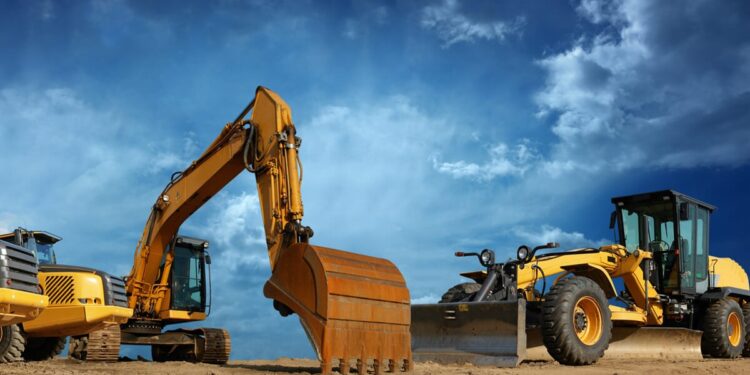Exploring the world of heavy-duty tools for building contractors, this guide aims to provide valuable insights into the types, features, safety measures, and cost-effectiveness of these essential tools. From the variety of tools available to the importance of durability and ergonomics, this discussion covers everything contractors need to know.
Types of Heavy-Duty Tools
Heavy-duty tools are essential for building contractors to efficiently carry out construction tasks. These tools are designed to withstand tough conditions and provide the necessary power to complete various projects.
1. Power Drills
Power drills are versatile tools used for drilling holes in different materials such as wood, metal, and concrete. They come in various sizes and power capacities, making them suitable for a wide range of construction tasks.
2. Circular Saws
Circular saws are heavy-duty cutting tools that are ideal for making straight and precise cuts in wood and other materials. They are commonly used in framing and carpentry work.
3. Jackhammers
Jackhammers are powerful demolition tools that are used to break up concrete, asphalt, and other hard surfaces. They are essential for tasks such as removing old foundations or breaking up rocks.
4. Concrete Mixers
Concrete mixers are heavy-duty machines used to mix cement, sand, gravel, and water to create concrete. They are essential for projects that require a large volume of concrete, such as building foundations or road construction.
5. Air Compressors
Air compressors are versatile tools that provide compressed air for various construction tasks, such as powering pneumatic tools like nail guns, paint sprayers, and sandblasters. They are essential for tasks that require high-pressure air.
Essential Features to Look for
When selecting heavy-duty tools for building contractors, there are several key features that should be considered to ensure efficiency, safety, and productivity on the job site.Durability is one of the most crucial aspects to look for in heavy-duty tools. Construction sites can be harsh environments, with tools being subjected to heavy use and rough handling.
Opting for tools made from high-quality materials such as hardened steel or impact-resistant plastics can ensure longevity and reliability, reducing the need for frequent replacements.Another essential feature to consider is ergonomics. Heavy-duty tools that are ergonomically designed can help prevent fatigue and reduce the risk of injuries for contractors who use them regularly.
Features such as cushioned handles, adjustable grips, and balanced weight distribution can significantly improve comfort and safety, especially during long hours of use.
Durability
- Choose tools made from high-quality materials such as hardened steel or impact-resistant plastics.
- Look for tools with robust construction that can withstand heavy use and rough handling.
- Consider tools with protective coatings to prevent corrosion and damage.
Ergonomics
- Opt for tools with cushioned handles to reduce strain on the hands and wrists.
- Select tools with adjustable grips to accommodate different hand sizes and preferences.
- Ensure tools have balanced weight distribution to prevent muscle fatigue and improve control.
Safety Measures and Best Practices
Building contractors need to prioritize safety when using heavy-duty tools to prevent accidents and injuries on the job. Proper maintenance and storage of these tools are also crucial to ensure longevity and efficiency. Additionally, contractors should undergo training to handle heavy-duty tools safely and effectively.
Safety Measures for Using Heavy-Duty Tools
- Always wear personal protective equipment (PPE) such as gloves, safety goggles, and steel-toed boots when operating heavy-duty tools
.
- Inspect tools before each use to ensure they are in proper working condition and free of any defects or damage.
- Follow manufacturer's instructions and guidelines for operating each tool safely to prevent accidents.
- Avoid distractions and stay focused on the task at hand when using heavy-duty tools to minimize the risk of accidents.
- Never modify or tamper with heavy-duty tools as it can compromise their safety and functionality.
Proper Maintenance and Storage of Heavy-Duty Tools
- Regularly clean heavy-duty tools after each use to prevent build-up of dirt and debris that can affect their performance.
- Store tools in a dry and secure location to prevent rusting and damage, and ensure they are properly organized to avoid accidents.
- Inspect power cords and plugs for any signs of wear or damage, and replace them immediately if necessary to prevent electrical hazards.
- Oil and lubricate moving parts of heavy-duty tools as recommended by the manufacturer to maintain their efficiency and longevity.
- Keep sharp cutting edges and blades properly sharpened to ensure clean and precise cuts, reducing the risk of accidents.
Training Requirements for Contractors
- Attend training sessions and workshops on the safe operation of heavy-duty tools to learn proper techniques and best practices.
- Obtain certifications or licenses for specific heavy-duty tools that require specialized training to ensure competence and safety.
- Regularly update skills and knowledge on new technologies and advancements in heavy-duty tools to stay informed and improve efficiency.
- Participate in on-the-job training and apprenticeships to gain practical experience and learn from experienced professionals in the field.
Cost-Effectiveness and Quality
When it comes to heavy-duty tools for building contractors, finding the right balance between cost-effectiveness and quality is crucial. Contractors need tools that are not only affordable but also durable and reliable in the long run.
Comparing Costs and Long-Term Value
- Consider the initial cost of the tool versus its expected lifespan. A slightly higher upfront cost may be worth it if the tool lasts longer and requires fewer repairs or replacements.
- Look for tools that come with warranties or guarantees to ensure that you are getting a good long-term value for your investment.
- Calculate the total cost of ownership, including maintenance, repairs, and replacement parts, to get a clearer picture of the tool's overall value.
Price vs. Quality Relationship
- A higher price does not always guarantee better quality. It's essential to research and read reviews to determine the actual quality of a tool before making a purchase.
- Some budget-friendly options may offer good quality, while some expensive tools may not live up to their price tags. Consider factors like brand reputation and user feedback when assessing quality.
- Avoid compromising quality for a lower price, as investing in a durable and reliable tool can save you money in the long term by reducing maintenance and replacement costs.
Balancing Cost-Effectiveness and Quality
- Set a budget based on your needs and the frequency of tool usage. Determine which tools are worth splurging on and where you can afford to cut costs without sacrificing quality.
- Consider investing in versatile tools that can perform multiple functions, saving you money on purchasing separate specialized tools.
- Consult with experienced contractors or industry experts to get recommendations on cost-effective yet high-quality tools that will meet your specific requirements.
Closing Notes
In conclusion, mastering the use of heavy-duty tools is crucial for building contractors to ensure efficiency, safety, and quality in their construction projects. By understanding the different types, essential features, safety measures, and cost-effective strategies, contractors can elevate their work to new heights.
FAQ Resource
What are the key features to look for in heavy-duty tools?
Key features to consider include durability, ergonomics, power, and versatility to ensure efficient and safe usage.
How important is proper maintenance of heavy-duty tools?
Proper maintenance is crucial to ensure the longevity and performance of heavy-duty tools, reducing the need for frequent replacements.
Are there specific safety measures contractors should follow when using heavy-duty tools?
Contractors should always wear appropriate safety gear, follow manufacturer guidelines, and undergo training to handle heavy-duty tools safely.
What is the significance of balancing cost-effectiveness and quality when purchasing heavy-duty tools?
Balancing cost and quality ensures that contractors invest in durable, efficient tools that provide long-term value for their construction projects.









